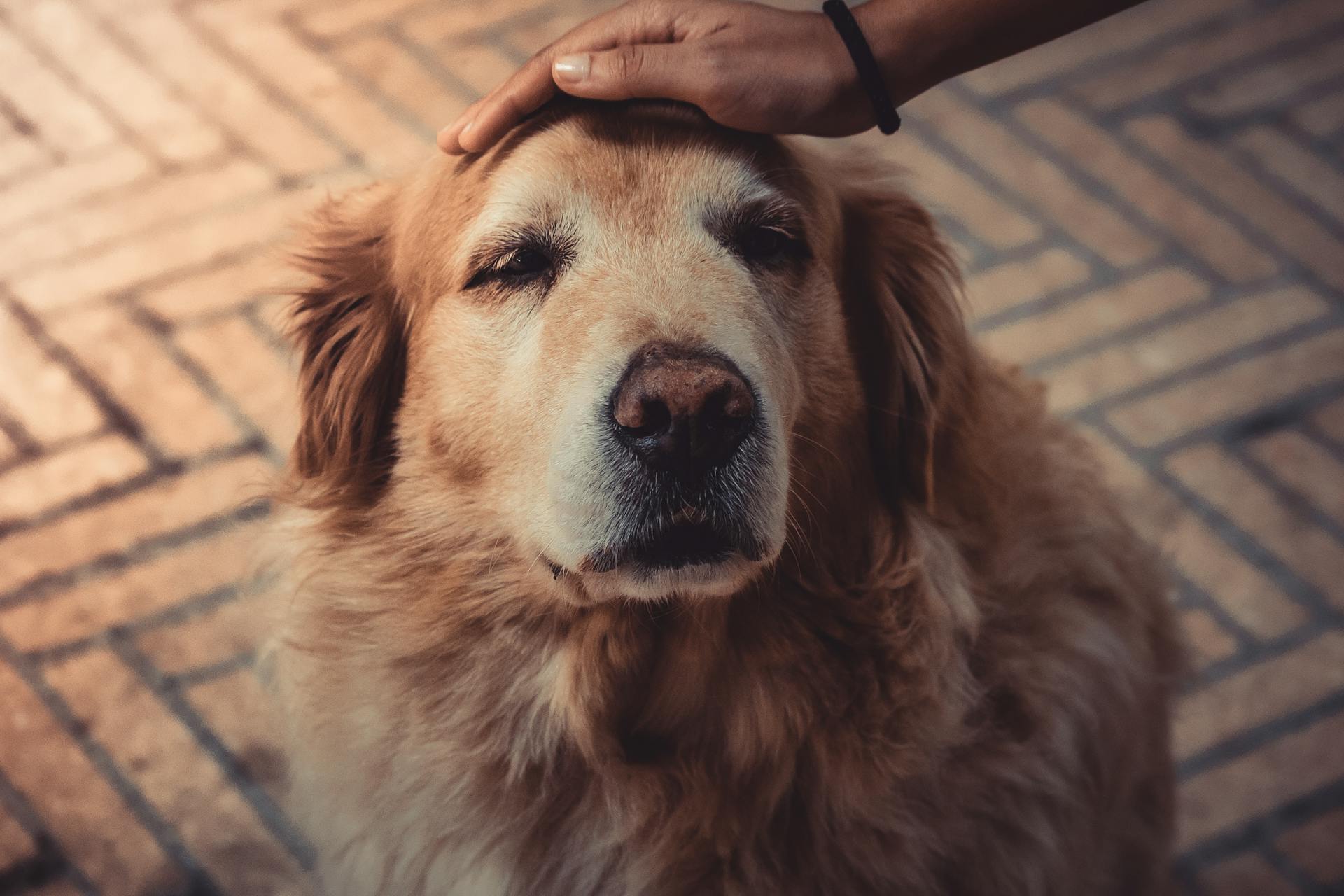
Pet insurance can be a lifesaver for pet owners, providing financial protection in case of unexpected veterinary bills.
Accident-only plans cover unexpected accidents, such as broken bones or injuries, but do not cover illnesses or chronic conditions.
Some plans offer a 90-day waiting period before coverage begins, so it's essential to review the policy carefully before purchasing.
Pre-existing conditions are typically excluded from coverage, but some plans may offer a rider or add-on to cover pre-existing conditions after a certain period.
Readers also liked: FXBO Integrates Brokeree to Offer Integrated CRM to Retail Brokers
Types of Pet Insurance
Accident-only coverage is a type of pet insurance that's designed to help with unexpected vet bills after an injury or accident. This plan is a good fit for pet owners who can't get comprehensive pet insurance due to age or health issues, or those who want more affordable insurance.
Accident-only plans typically cover diagnostic tests, treatment, surgery, exam fees, and prescription medication for emergency vet care. They also cover common mishaps such as swallowing a foreign object, heat stroke, breaking a bone, bee stings, and getting hit by a car.
These plans are often cheaper than accident and illness plans because they cover less. Not all pet insurers sell accident-only plans, but they may be the only option for older pets or those with limited budgets.
You might enjoy: How Medical Bills Are Paid after Car Accident in Texas
Compare Options

If you're looking for an affordable safety net in case of emergencies, an accident-only plan might be the way to go. This type of plan covers vet bills for things like broken bones, lacerations, and swallowing a foreign object or something toxic.
Accident-only plans are a good option for healthy pets, puppies, and kittens, as well as senior dogs and cats who may not qualify for a comprehensive policy. They're also a good choice for pet owners on a budget who want to ensure they have a financial safety net for emergency care.
An accident-only plan can help cover unexpected expenses like emergency surgery after eating a foreign object, which can cost between $1,600 to almost $22,000. This can give you peace of mind and help you avoid financial stress in an emergency.
Here are the key differences between accident-only plans and other types of pet insurance:
- Accident-only plans: Ideal if you're mainly looking for an affordable safety net in case of emergencies.
- Accident and illness plans: A good fit if your pet needs more frequent vet visits and you want comprehensive care.
- Wellness plans: Great if you're after more predictable costs for routine, preventive care.
Accident and Illness Plans
Accident and illness plans are a popular choice among pet owners, and for good reason. They offer comprehensive coverage for both injuries and illnesses, making them a great fit for pets that need more frequent vet visits.
Broaden your view: H B L Power Share Price

This type of plan can cover chronic conditions and hereditary issues, as well as accidents and illnesses. If your dog is hit by a car or gets a urinary tract infection, your plan will cover their treatment, up to your coverage limit.
Accident and illness plans won't reimburse you for preventive care like annual checkups and vaccinations unless you buy a wellness add-on. However, they do cover the broadest range of problems that your pet could have.
They're also the most customizable and widely available, which means you'll have plenty of options to find the coverage you need. This makes them a great choice for pet owners who want to tailor their insurance to their pet's specific needs.
Here are some scenarios that an accident and illness plan could cover:
- Accidents, such as being hit by a car
- Illnesses, such as urinary tract infections
- Chronic conditions, such as arthritis
- Hereditary issues, such as hip dysplasia
Dental Care
Dental care is an essential part of your pet's overall health, and it's crucial to understand what your pet insurance policy covers. Pet insurance generally won't cover routine dental cleanings unless you have a wellness plan.
See what others are reading: Dog Dental Insurance Plans

Some policies may cover certain issues such as broken teeth or congenital conditions, but not dental diseases like gingivitis. You should read your policy's fine print to understand what's included.
If your pet does need dental care, you might find that your insurer will only cover it if your pet has had a recent cleaning under anesthesia. This is why it's essential to check your policy's details before making any decisions.
See what others are reading: Figo Pet Insurance Cancellation Policy
Policy Details
Policy Details are crucial when choosing a pet insurance policy. Make sure the maximum payout will cover high-cost treatments if they're ever needed.
Coverage limits vary by policy, so take note of any exclusions, especially for pre-existing conditions, cosmetic treatments or breed-specific limitations. This will help you understand what's not covered.
Waiting periods are also important to consider, as they determine how long you'll need to wait before certain types of coverage begin.
Here's a quick rundown of what to look for in a policy:
Evaluate Policy Details

Evaluating policy details is a crucial step in choosing the right pet insurance for you and your furry friend. Coverage limits are a key factor to consider, as you want to make sure the maximum payout will cover high-cost treatments if needed.
Exclusions are another important aspect to take note of, especially for pre-existing conditions, cosmetic treatments, or breed-specific limitations. Waiting periods also vary, typically ranging from 2-14 days for accidents and 14-30 days for illnesses.
Here are some key policy details to consider:
Maximum limits or caps on policies may include a maximum incident benefit, maximum annual benefit, or maximum benefit cap/lifetime limit. These limits can vary between policies, so it's essential to review them carefully.
Policies may also have a deductible, which is the amount you need to pay out of pocket before coverage begins. Annual deductibles are common, but some companies offer per-condition deductibles.
A unique perspective: Does Pet Insurance Cover Annual Visits
Assess Your Needs
Assessing your needs is a crucial step in finding the right pet insurance policy. Consider your pet's age, as puppies and kittens often require different coverage than older pets.

Your pet's breed can also play a significant role in determining their health needs. Some breeds are prone to specific hereditary conditions, so it's essential to research this before selecting a policy.
Health history is another critical factor to consider. If your pet has pre-existing conditions, look for policies that don't have exclusions around them.
Here are some key factors to keep in mind when assessing your pet's needs:
- Age: Puppies and kittens (under 1 year)
- Breed: Breeds prone to specific hereditary conditions
- Health history: Pets with pre-existing conditions
Choosing a Policy
Choosing a Policy can be a daunting task, especially with so many options available. There are typically three categories of pet health insurance: Dog Insurance, Cat Insurance, and Bird & Exotic Pet Insurance.
Consider the age and health of your pet, as well as your budget, when selecting a policy. Most policies require pets to be at least 8 weeks old to enroll.
When evaluating policy details, make sure to check the coverage limits, exclusions, and waiting periods. Coverage limits should cover high-cost treatments, while exclusions should be noted for pre-existing conditions, cosmetic treatments, or breed-specific limitations. Waiting periods should be understood to avoid any surprises.
Here are some key factors to consider when choosing a policy:
- Coverage limits
- Exclusions
- Waiting periods
Don't forget to ask the insurance agent or company about important details, such as the ability to choose any vet, coverage for pre-existing conditions, and reimbursement options.
Shopping Tips

Shopping for pet insurance can be a daunting task, but with the right approach, you can find a policy that fits your needs and budget. Consider your goals, budget, animal's age, and each policy's terms to determine the best plan for you.
Don't just choose a provider based on price; look for a straightforward claims process and a reputation for timely reimbursements. Research insurance providers to ensure you're getting the best value.
Before shopping, add up the costs of the policy for the expected life of your animal and consider how much you could afford to pay for emergency treatment or a long illness. Pet insurance quotes are easily obtained online on provider websites, so shop around and compare policy benefits, deductibles, limits, and exclusions.
Some providers consider conditions treated during a previous policy term to be pre-existing, so check if your insurance provider offers continuous coverage options to avoid this situation. This is especially important for ongoing conditions like allergies and osteoarthritis.
Expand your knowledge: Class B Shares Private Company

Most policies require pets to be at least 8 weeks old to enroll, and some may have age limits for coverage. Be sure to check the provider's age requirements before purchasing a policy.
Many pet insurance providers offer discounts, such as multi-pet discounts, micro-chipping discounts, and group benefit discounts. Ask about any available discounts when shopping for a policy.
Here are some key things to consider when shopping for pet insurance:
Questions to Ask
Choosing a Policy requires asking the right questions. You need to understand what's covered, what's not, and how claims are processed.
Can you choose any vet? This is a crucial question to ask your insurance agent or company. Some policies may have specific requirements or restrictions on which vets you can see.
What is and is not covered? Remember the four general categories of coverage: accident, illness, wellness, and additional benefits. This will help you understand what you're paying for.

Is there a per-incident limit for accidents or illnesses? This is an important question to ask, as it will help you understand the financial implications of a claim.
Here are some key questions to ask your insurance agent or company:
- Can I choose any vet?
- What is and is not covered?
- Is there a per-incident limit for accidents or illnesses?
- Are there annual or lifetime limits?
- Will I be reimbursed by a certain percentage amount or according to a benefit schedule?
- Is there a waiting period before coverage becomes effective?
- If my pet has a pre-existing condition or chronic condition, how is that covered or excluded?
- Does the policy have continuous coverage for long-term conditions?
- How long do you take to pay claims?
Asking these questions will help you make an informed decision and choose a policy that meets your needs.
How to Choose
Choosing a policy that fits your needs and budget is crucial. Consider various factors to ensure the policy meets your pet's health needs.
The first step is to evaluate policy details, which includes coverage limits, exclusions, and waiting periods. Make sure the maximum payout will cover high-cost treatments, take note of any exclusions, and understand how long you'll need to wait before certain types of coverage begin.
Pet health insurance policies are typically offered in three categories: Dog Insurance, Cat Insurance, and Bird & Exotic Pet Insurance. Insurers may also offer insurance plans that are specialized to the breed, age, or indoor/outdoor nature of your pet.
Readers also liked: Bhp Billiton Stock Symbol

To choose the right coverage for your pet, consider your goals, budget, animal's age, and each policy's terms. The best pet insurance plan for you depends on these factors.
Before choosing a deductible, consider how much you can afford to pay out of pocket. Most pet insurance companies allow you to choose a deductible between $0 and $1,000, and a higher deductible means lower annual premiums.
When shopping for pet health insurance, research insurance providers to ensure they have a straightforward claims process, no network restrictions, and a good reputation. Read up on reviews from other pet owners to get a sense of each provider's strengths and weaknesses.
Here are some additional factors to consider when choosing a policy:
By considering these factors and doing your research, you can choose a policy that provides the right level of coverage for your pet's needs.
Understanding Costs
Understanding costs is a crucial part of choosing the right pet insurance for your furry friend. The amount you'll pay for pet insurance depends on several factors, including the type of coverage you pick, the age and breed of your pet, and where you live.

On average, a comprehensive (accident and illness) premium costs $53.34 per month for a dog and $32.25 for a cat. Accident-only insurance plans are even more affordable, with monthly premiums averaging $16.70 for dogs and $10.18 for cats.
To manage your costs effectively, it's essential to consider your budget and make informed decisions about your insurance plan. Here are some key factors to keep in mind:
- Deductibles: Higher deductibles can lower your monthly premiums but require more out-of-pocket spending if something happens.
- Premiums: Decide how much you're comfortable paying monthly or yearly to keep the policy active without straining your budget.
- Reimbursement rates: Choosing a higher reimbursement rate means the insurer covers more of each vet bill, but it can also raise your premiums.
Final Expenses
Final expenses can be a heavy burden to bear, especially during an already emotional time. The end of your pet's life may bring not only heartbreak but also expenses associated with euthanasia, cremation, or burial.
Pet insurance may cover some or all of these costs, depending on your plan.
Consider reading: Rental Income and Expenses
Cost
The cost of pet insurance can be a bit overwhelming, but understanding the factors that affect it can help you make an informed decision. The average monthly comprehensive premium was $53.34 for a dog and $32.25 for a cat in 2022.

If you're on a tighter budget, you might consider accident-only insurance, which can be significantly cheaper. Accident-only insurance for dogs averaged $16.70 monthly, while for cats it was $10.18.
Deciding on a deductible is a crucial part of choosing a pet insurance plan. A higher deductible means lower monthly premiums, but you'll need to pay more out-of-pocket if your pet gets sick or injured.
Paying premiums is a regular expense, and you'll need to consider how much you're comfortable paying each month. The amount you pay will depend on the type of coverage you choose and the age and breed of your pet.
A unique perspective: What Type of Business Insurance Do I Need
Lifetime Costs
Lifetime costs can be staggering, with some expenses sneaking up on you unexpectedly.
A good example is the cost of car ownership, which can range from $8,500 to $10,500 per year, including fuel, maintenance, and insurance.
Maintenance is a significant factor, with some car owners spending up to 15% of the vehicle's purchase price on repairs and upkeep within the first three years.
The cost of homeownership is another major expense, with the average homeowner spending around 1% to 3% of the home's value on property taxes each year.
Utility bills can also add up quickly, with the average household paying around $100 to $300 per month for electricity, gas, and water.
Take a look at this: How Many Rubles Does the Average Russian Make
Frequently Asked Questions
What is the best level of pet insurance?
Consider a pet insurance plan with a wellness add-on to cover unexpected vet visits and potential savings, weighing the extra cost against your pet's health needs. The best level of pet insurance varies depending on your pet's age, health, and lifestyle.
Sources
- https://www.bankrate.com/insurance/pet-insurance/what-are-the-three-types-of-pet-insurance/
- https://idoi.illinois.gov/consumers/consumerinsurance/pets.html
- https://www.investopedia.com/types-of-pet-insurance-7568108
- https://www.nerdwallet.com/article/insurance/pet-insurance-coverage
- https://www.nytimes.com/wirecutter/reviews/best-pet-insurance/
Featured Images: pexels.com


